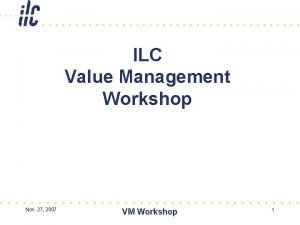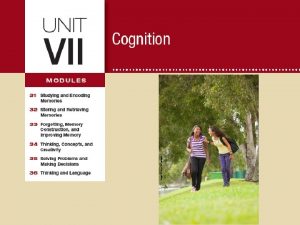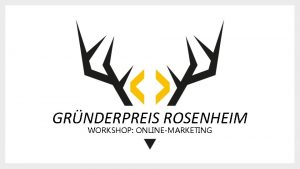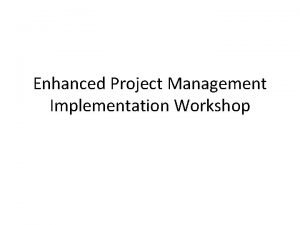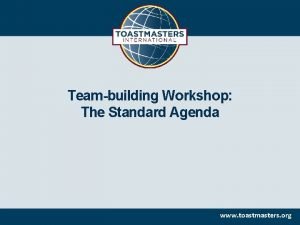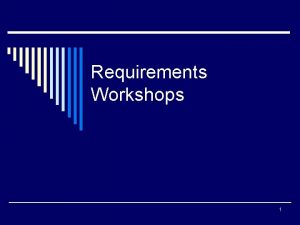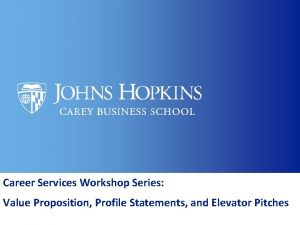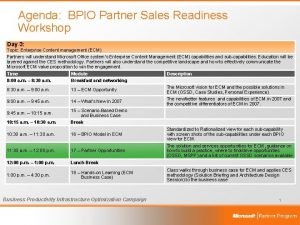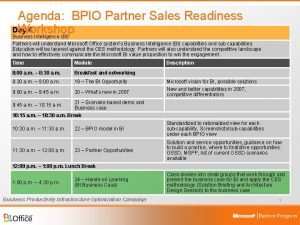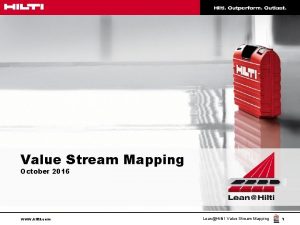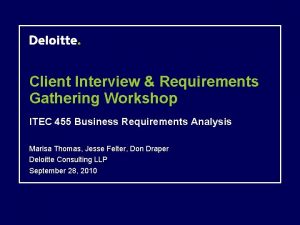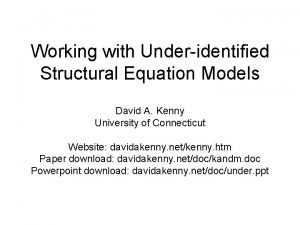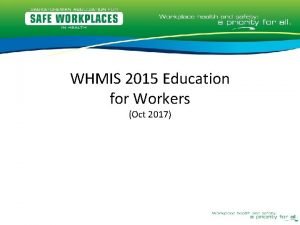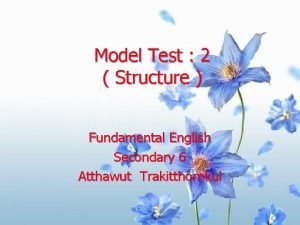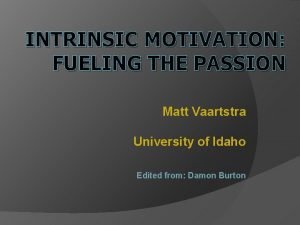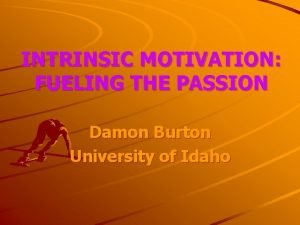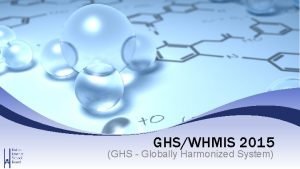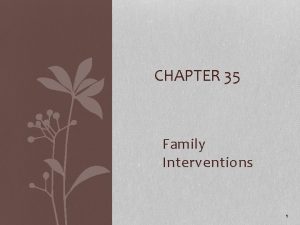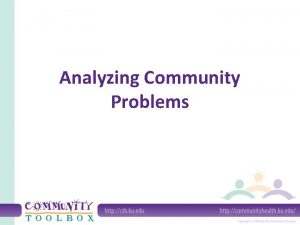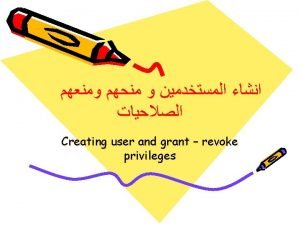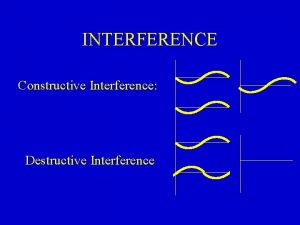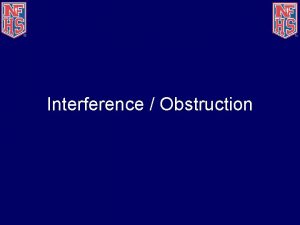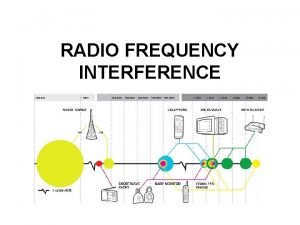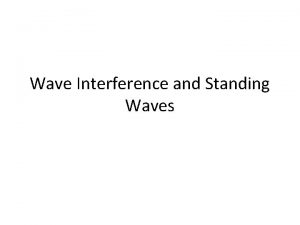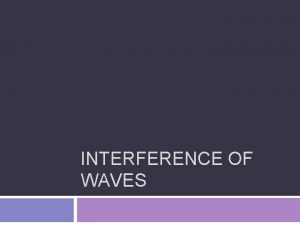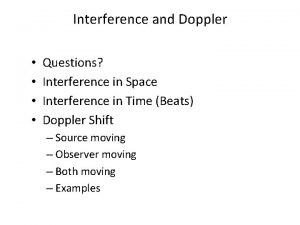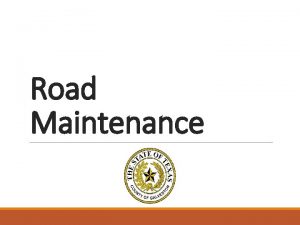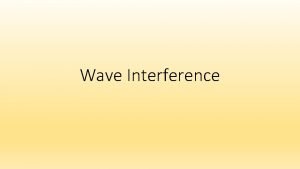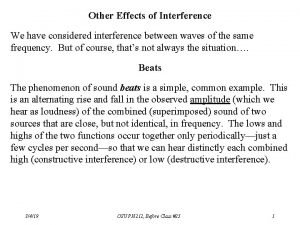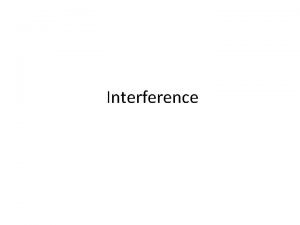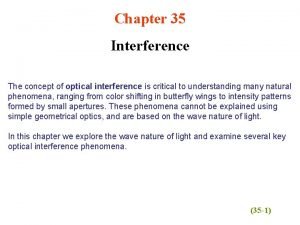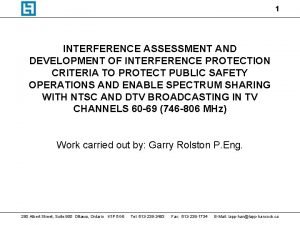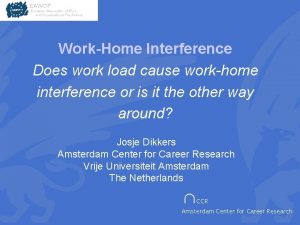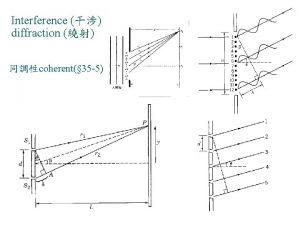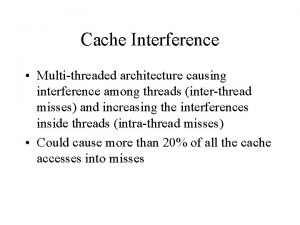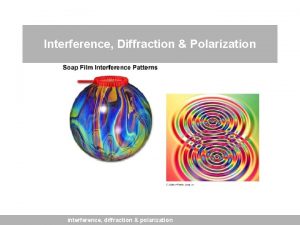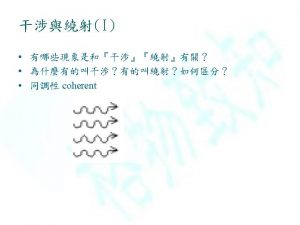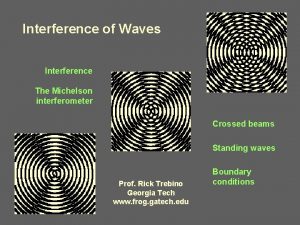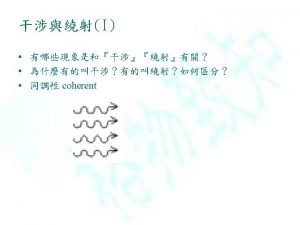Workshop on Interference Management Techniques Identified Agenda Interference























- Slides: 23

Workshop on Interference Management Techniques Identified

Agenda § Interference Management Techniques Identified } Organisational Approach: Licensing } Interference Model } Advanced Interference Management Approaches 2007 by LS telcom AG Workshop on Interference Management, 3 rd of May 2007, Brussels 2

Organizational Measures § Interference management requires a minimum set of known parameter } Technical description (set of parameters) for the involved radio stations } Information regarding the locations of the radio stations involved } Assumptions regarding possible ways of interaction / interference between the systems (Wave propagation and technical interference model). Detailed Interference calculations can become exhaustive and requires extensive knowledge of involved systems 2007 by LS telcom AG Workshop on Interference Management, 3 rd of May 2007, Brussels 3

Definition of Licenses § Interference assessment is found on different stages of license definition Division of Radio Spectrum into Bands Allocation of Bands to Services Definition of Guard-Bands suitable for Service Interference Assessment Compatibility Analyses in case of Band-Sharing Interference Assessment Determination of License Type Interference Assessment Depending on Granting of Licenses to Spectrum Users 2007 by LS telcom AG Workshop on Interference Management, 3 rd of May 2007, Brussels License Type 4

License Types § Common found license types } } Licensing of entire Frequency Blocks ‒ General Interference considerations are done during specification of License ‒ Interference management inside Block left to Operator ‒ Interference management at border of license area necessary Licensing per Site ‒ } Interference Calculations for each Site before License is granted Class Licensing / Common Licensing ‒ Interference considerations during specification of License 2007 by LS telcom AG Workshop on Interference Management, 3 rd of May 2007, Brussels 5

Different License Types are not suitable for all applications Required geographic separation between Radio Stations § Site Licensing Block Licensing License Exempt Number of Radio Stations to consider 2007 by LS telcom AG Workshop on Interference Management, 3 rd of May 2007, Brussels 6

Licensing Procedure Request for License Exchange of Information Evaluation of Information Interference Coordination Analysis Assessment Technical Coordination License awarded 2007 by LS telcom AG License Refused Workshop on Interference Management, 3 rd of May 2007, Brussels 7

Coordination Analysis § Coordination Analysis } Simplified Methods to determine if coordination is required ‒ ‒ HCM approach for e. g. Land-Mobile Services ‒ Trigger level for received field strength on border line instead of interference calculation ‒ No information about possible victims stations required DT/T Method for Satellite communications ‒ Simplified worst-case calculation ‒ In case that affected stations are indicated more detailed calculations have to be performed to assess harmful interference In both examples a tradeoff between required system information and accuracy of interference calculations is done to facilitate the procedure 2007 by LS telcom AG Workshop on Interference Management, 3 rd of May 2007, Brussels 8

Technical Coordination § Technical Coordination } Technical coordination uses more detailed calculations then the coordination analysis } Calculation of interference measures instead of trigger values } Requires more information regarding systems than coordination precheck ‒ Wanted, Interferer and Victim stations have to be known Examples are the calculation of C/I for Satellite Links based on ITU-R S. 740 or ITU-R S. 741 or coordination calculations for DVB-T systems following the Geneva 1984 plan 2007 by LS telcom AG Workshop on Interference Management, 3 rd of May 2007, Brussels 9

Agenda § Interference Management Techniques Identified } Organisational Approach: Licensing } Interference Model } Advanced Interference Management Approaches 2007 by LS telcom AG Workshop on Interference Management, 3 rd of May 2007, Brussels 10

Interference Model (deterministic) Interferer 1 Interferer 2 Required parameter for system under test n Wanted radio station with characteristics n Characteristics of transmitted signal n Receiving radio station with characteristics n Characteristics of propagation path Wanted Radio Station Receiving Radio Station (Victim) Interferer n 2007 by LS telcom AG Required parameter for each interferer n Characteristics of the interfering radio station n Characteristics of transmitted interfering signal n Characteristics of propagation path Workshop on Interference Management, 3 rd of May 2007, Brussels 11

Interference model (deterministic) spectral density (of TX) frequency response (of RX) only the power emitted in the overlap region will be received 2007 by LS telcom AG Workshop on Interference Management, 3 rd of May 2007, Brussels 12

Interference Model (stochastic) The impact of one interferer is neglecteable, Interferer 1 because its emited power is small. Interferer 2 The sites of the interferers are unknown. Wanted Radio Station Stochastical approach of noise sources impacting Interferer n the wanted radio station (example: UWB) 2007 by LS telcom AG Workshop on Interference Management, 3 rd of May 2007, Brussels 13

Interference Model (mixed) example: UMTS Interferer 1 Interferer 2 Network of interfering stations at well defined sites Wanted Radio Station with time depending power Stochastical approach to traffic scenarios fixed power of all stations deterministic interference analysis Interferer n 2007 by LS telcom AG Workshop on Interference Management, 3 rd of May 2007, Brussels 14

Interference Measures § To assess the impact of interference different interference measures are used } For analogue communication systems: ‒ } Ratio of signal to interference S/N for reference Situation (intelligibility) For digital communication systems ‒ Required Energy per Bit per for given reference Situation (required Bit Error Rate) } Often also metrics like C/N, C/(N+I) or C / I are used } Also sometimes the threshold degradation T/I or T/N is computed instead, as this calculation does not require any knowledge regarding the wanted signal. 2007 by LS telcom AG Workshop on Interference Management, 3 rd of May 2007, Brussels 15

Modeling of Propagation § Different Models to compute the wave propagation are available } Models are selected in dependence of service and frequency range 2007 by LS telcom AG Workshop on Interference Management, 3 rd of May 2007, Brussels 16

Summation of Interfering signals § In most situations a radio stations suffers from more than one interfering signal. } Impact of all interfering signals on receiver has to be computed } Different methods are commonly used: ‒ Maximum procedure ‒ Power sum method ‒ Simplified multiplication method ‒ Lognormal procedure Interferer 1 Interferer 2 Interferer n 2007 by LS telcom AG Workshop on Interference Management, 3 rd of May 2007, Brussels 17

Agenda § Interference Management Techniques Identified } Organisational Approach: Licensing } Interference Model } Advanced Interference Management Approaches 2007 by LS telcom AG Workshop on Interference Management, 3 rd of May 2007, Brussels 18

Interference Mitigation Technologies § Different technologies are used to reduce interference caused or suffered by systems or to improve system performance in interfered environments 2007 by LS telcom AG Workshop on Interference Management, 3 rd of May 2007, Brussels 19

Advanced Interference Management § Different methods to of advanced interference management has been discussed in the past. Two examples are } } Interference Temperature Approach (FCC) Spectrum Usage Rights (Ofcom) 2007 by LS telcom AG Workshop on Interference Management, 3 rd of May 2007, Brussels 20

Interference Temperature § Interference Temperature Approach } Interference Temperature Metric is used to express the interference situation inside service areas } Interference Temperature is measured at the input of the receiver } Additional services are only allowed in case that interference temperature stays below a pre-defined Threshold } Interference Temperature Approach requires information exchange between radio stations (interference thermometer) 2007 by LS telcom AG Workshop on Interference Management, 3 rd of May 2007, Brussels 21

Spectrum Usage Rights § Spectrum Usage Rights } Topic is covered in detail by William Webb in a following session 2007 by LS telcom AG Workshop on Interference Management, 3 rd of May 2007, Brussels 22

Thank you very much !
 Value management workshop agenda
Value management workshop agenda Proactive and retroactive interference
Proactive and retroactive interference Proactive interference vs retroactive interference
Proactive interference vs retroactive interference Agenda sistemica y agenda institucional
Agenda sistemica y agenda institucional Marketing workshop agenda
Marketing workshop agenda Vision workshop agenda
Vision workshop agenda Team building workshop agenda
Team building workshop agenda Requirements workshop agenda
Requirements workshop agenda Value proposition workshop agenda
Value proposition workshop agenda Process improvement workshop agenda
Process improvement workshop agenda Sales readiness definition
Sales readiness definition Sales readiness definition
Sales readiness definition Value stream mapping workshop agenda
Value stream mapping workshop agenda Requirements gathering workshop agenda
Requirements gathering workshop agenda Under-identified model
Under-identified model Match the description with the example whmis
Match the description with the example whmis 1,000 species of finch have been identified.
1,000 species of finch have been identified. Intrinsic motivation
Intrinsic motivation Sdt motivation continuum
Sdt motivation continuum Pictograms can be easily identified because they have a
Pictograms can be easily identified because they have a Potential development projects can be identified by
Potential development projects can be identified by Characteristics of family
Characteristics of family Just
Just Identified by password
Identified by password
